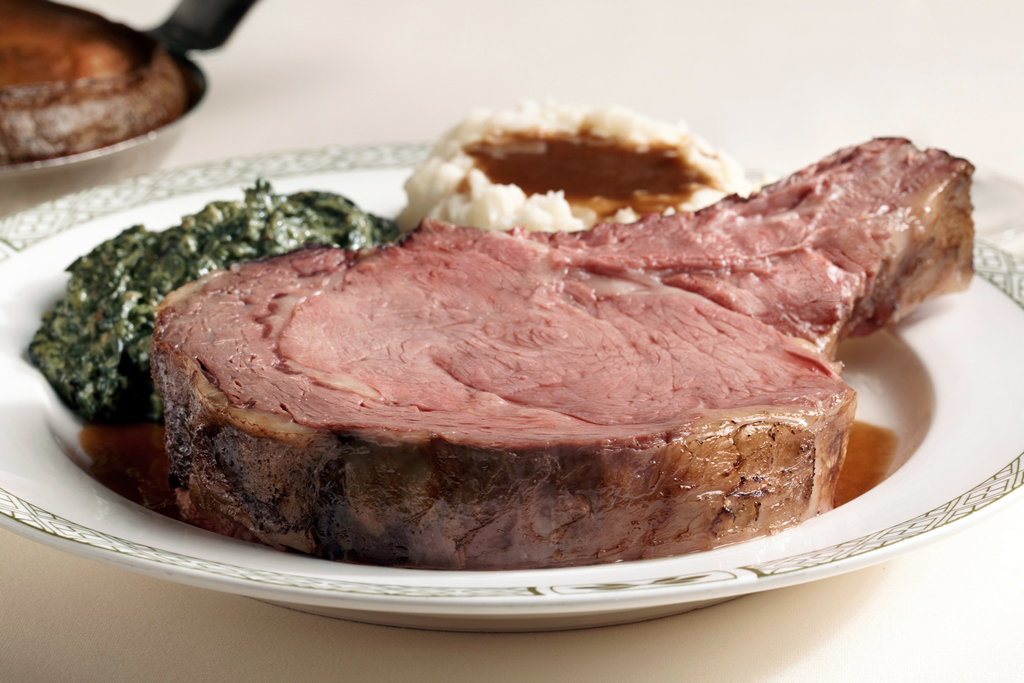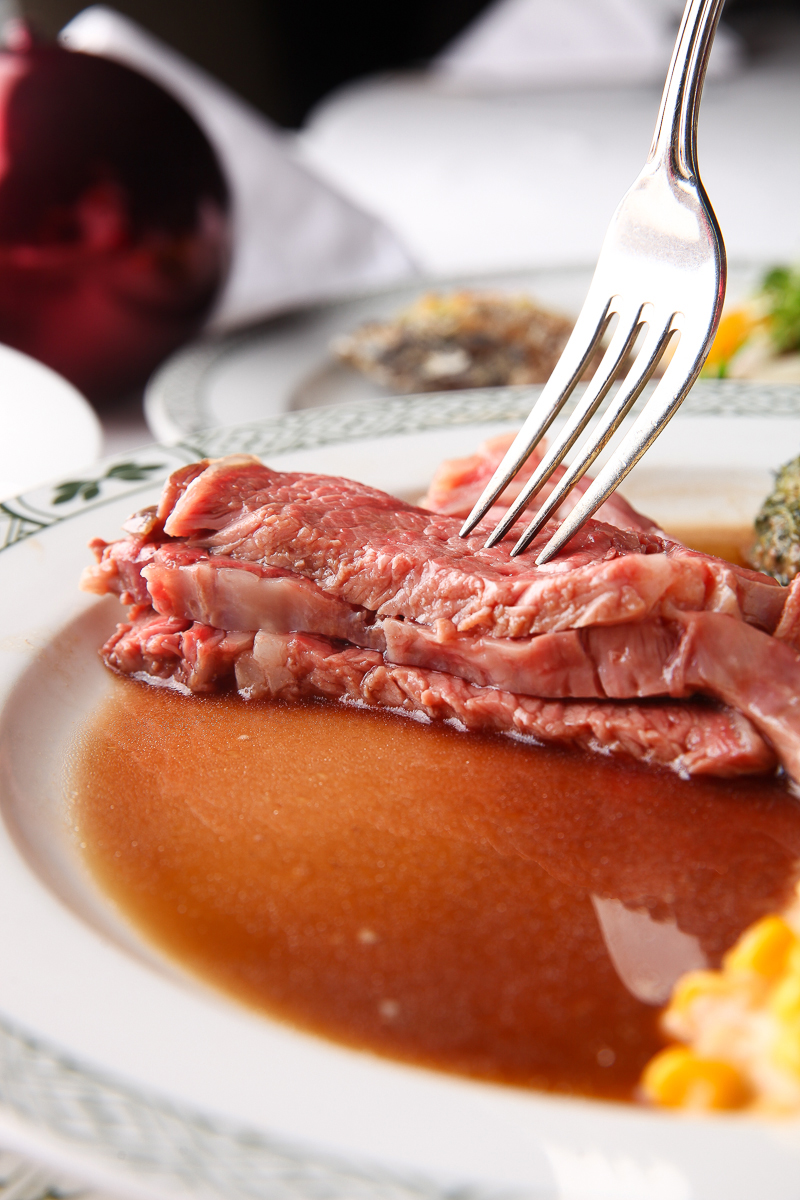Prime Rib Is the King of All Cuts, And It’s Easier to Make at Home Than You Think
Meat lovers, pay attention.

There’s nothing wrong with rib eye. We love porterhouse, can get down with a New York strip, and even skirt steak can hit the spot sometimes.
But if you’re looking for the ultimate beef experience, you need to go for a standing rib roast, aka prime rib. Thick, juicy, with just the right amount of rich marbling and tasty crust, there’s no cut quite like it.
While a prime rib station is a common sight at fancy buffets and high-end restaurants, they’re rarely prepared at home. We think this is a travesty.
Maxim went right to the source—executive chef Ryan Wilson from Beverly Hills’ iconic Lawry’s The Prime Rib—to tell you everything you need to know about preparing this killer cut at home.

Even meat lovers are surprised to hear that prime rib is a great option for the home cook.
“It’s a crowd pleaser, a great cut for celebrations, and just looks fantastic,” says Wilson. “If you give yourself the proper amount of time, and don’t try to rush it, cooking prime rib doesn’t involve a lot of active cooking, so you have time to do everything else you need to get done. It’s expensive, but fairly flexible, and for those who are adventurous and capable in the kitchen, it’s not hard to do.”
Wilson recommends sourcing your prime rib from a great local butcher: “It’s late in the season, but it’s good to give your butcher as much advance notice as possible to ensure you get a properly aged piece of be bone-in beef, which is critical; I recommend 30 days wet-aged.”
In terms of what you should be looking for, Wilson says, “You want a good amount of inner muscular marbling. Ideally you want to ask your butcher for a center cut of the prime rib, because it has the best distribution of fat and muscle and the best combination of flavors and textures.”
Follow the instructions below for the best beef experience you’ve ever had at home.

Ingredients (makes 6 to 8 servings):
- 1 (4-rib) standing rib roast
- Lawry’s Seasoned Salt
- 1 bag (5 lb.) rock salt
Instructions:
1. Sprinkle fatty cap of roast with Seasoned Salt. In a heavy roasting pan, spread rock salt evenly over bottom; place wire roasting rack on top of salt.
2. Place the roast on rack, fatty side up. Make sure no salt actually touches the beef. Insert meat thermometer in thickest part of meat, making sure it does not touch bone.
3. Roast in preheated 350-degree oven until thermometer registers 130-degrees F. for rare, 140 F. for medium, or approximately 20 to 25 minutes per pound. (If desired, use an instant read thermometer to test internal temperature periodically; do not leave this type of thermometer in the roast.)
4. Remove from oven and let stand 20 minutes before carving*. Using a sharp knife, slice meat across the grain for serving. Discard rock salt.
* Let the meat rest, at least an hour, ideally two. A great trick for doing that at home is to turn the oven off after it’s finished cooking and crack the door; it creates a great holding cabinet for the beef.
In many ways, prime rib epitomizes every home cook’s challenge, because they want everything to come together immediately, and prime rib takes time—I’d say six hours, from placing it in the oven ’til when you plan to serve it. But relax, pour yourself a glass of wine, and have some fun with it; cooking prime rib doesn’t have to be a rigid experience.
